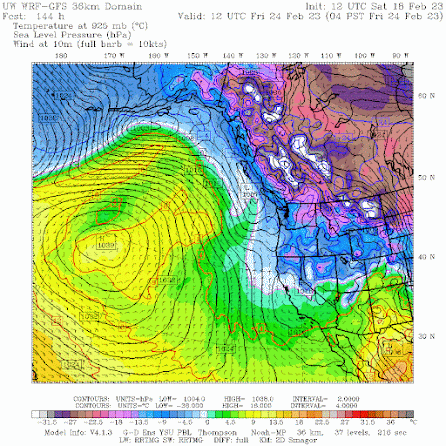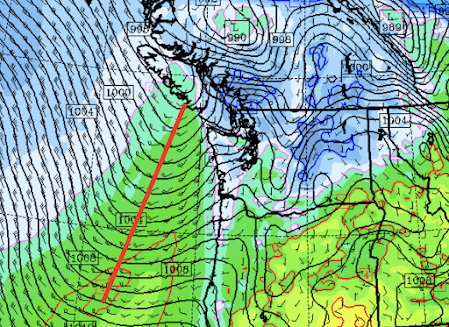This is a question I am often asked? How far out into the future can we predict the weather?
Listen to my podcast and I will provide the surprising, and complex, answer.
But first a few hints....
The National Weather Service has a website that shows how weather forecast skill declines over time (see below). This figure indicates how the forecast skill at roughly 18,000 ft (500-hPa) declines over time for the U.S. global model (NCEP), the Canadian model (CMC), and the gold-standard European Center (ECMWF). 1 indicates a perfect forecast. When this measure (the anomaly correlation) drops to 0.6 the forecast becomes only marginally useful.
Forecasts are very good through 3 days. Quite good though five days, but then rapidly declines after that. Some skill continues even two weeks out, but it is very marginal.
Another way to see the decline in skill is to look at a series of weather forecast maps for increasing forecast projection.Here is the analysis (truth) for sea level pressure (solid lines) and low-level temperatures (colors) for 4 AM on 24 February.
In contrast, the 240 hr (10-day forecast) has the high-pressure area hugely in error and shifted northward, and cold air (blue) flooding the northeast Pacific. Not good.
I generally don't trust forecasts beyond 7-8 days unless the ensembles of multiple forecasts are on the same page.
To listen to my podcast, use the link below or access it through your favorite podcast service.
PS: Here are the snow totals for last night. There was some snow everywhere but measurable snowfall was mainly north of Seattle. In most locations, it melted rapidly after it fell.












.png)





























.png)










